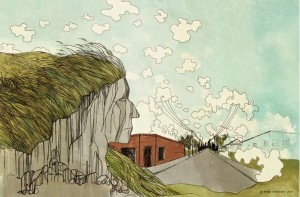
You might visit the corner of Peak and Bryan streets today to eat at Bangkok City or Vietnam or maybe get a drink at Bryan Street Tavern. Back in 1975 it was known as “The Corner,” a “cluster of depressing, ramshackle bars” around which thousands of Native Americans who were relocated to Dallas from rural areas across the Great Plains would cluster to support each other as they looked to start new lives in the big city.
In the second of the 40 greatest stories in D Magazine’s history that we’ll be highlighting this year to celebrate our 40th anniversary, writer Doug Holley spends time among American Indians at the bar Tom & Jerry’s, which had been welcoming them since the late 1950s. That’s about the same time that the influx of Native Americans from reservations to a new urban environment began. It was a result of the federal Bureau of Indian Affair’s relocation program, which was intended as a way of moving people to places with a greater chance of finding work and financial success. In reality, they were often brought to less desirable sections of urban centers and essentially dumped there with relatively little support. And so in Dallas they gathered at The Corner, drinking and commiserating.
Today the Urban Inter-Tribal Center of Texas, which moved last year from its longtime home in Oak Cliff to the medical district near Parkland hospital and UT Southwestern, is still around to provide medical care and job training funded by a variety of government and private grants. There are an estimated 43,000 American Indians in the Dallas-Fort Worth area, but as the only center of its kind in Texas, the place also serves people from among all of the 200,000 Native Americans in the state.
Holley’s story is a carefully observed study of a specific group of people living in limbo as the opportunities that they came to Dallas seeking had not yet materialized. It could be read as perpetuating some of the worst stereotypes of American Indians’ relationship with alcohol. Even if his reporting involves descriptions of their various states of drunkenness, he’s sympathetic to their situation and is careful to note that not all members of their community spend their days at The Corner. Some were beginning to have success building a life in the “strange, cold city.”





